What to Do in Case of Stability Issues?¶
You may either experience issues with interruptions in wireless screen sharing from the beginning, or the devices initially worked flawlessly and you are now noticing that the screen transmission stops after some time.
This can have various causes and therefore different solutions. These are Wi-Fi devices that transmit a video stream from a source device to a projector or display wirelessly with as few obstacles as possible, even through an access point/router infrastructure. Additionally, the device needs to be powered via a USB port.
Note
If any of these factors are not set up optimally, it can lead to interruptions and poor performance.
Checklist¶
Please carefully go through all the helpful points in the checklist below. The first four points are critical and significantly affect the stability and performance of the EZCast Pro Dongle II:
1. Check Power Supply¶
While it may seem intuitive to power the dongle via any USB port of the projector, great caution is required. Without a sufficient power supply from the connected USB-A port that provides minimum 7.5W (5V/1.5A), the dongle may turn on but will experience interruptions. If your display does not have a USB charging port or there is any doubt whether the USB port supports the required minimum power, we recommend using a USB power adapter (5V/2A):
Incorrect power supply from projector
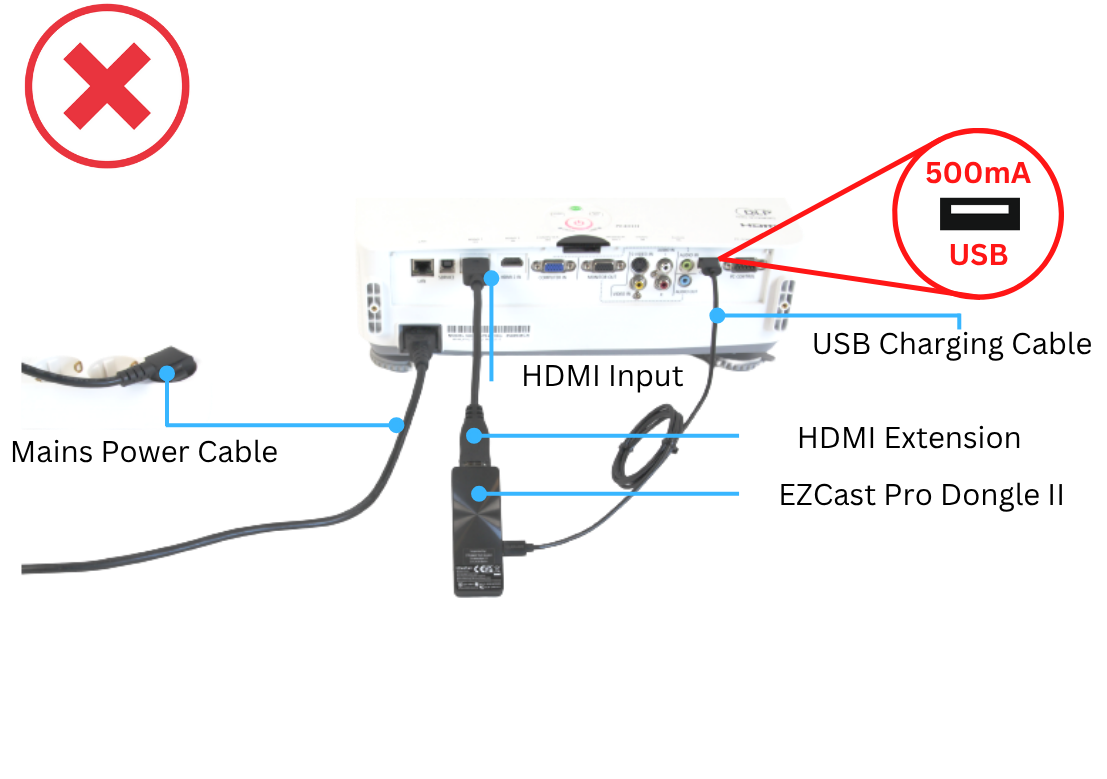
Correct power supply from projector
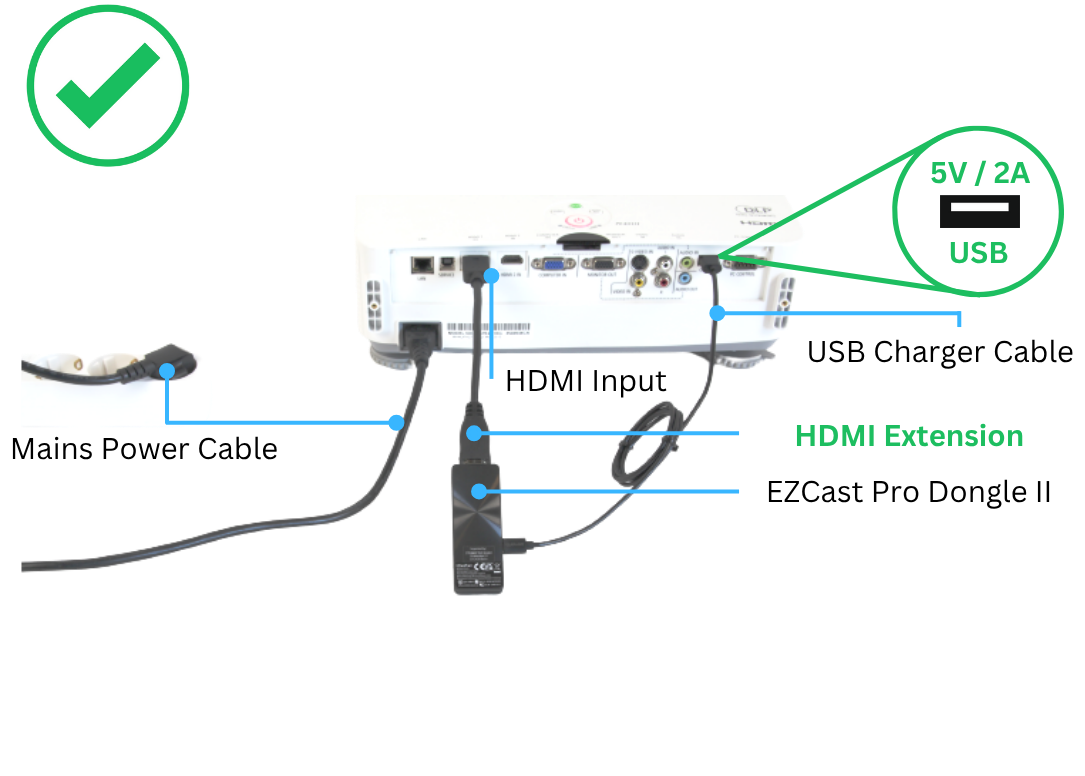
Correct power supply with USB power adapter (5V/2A)
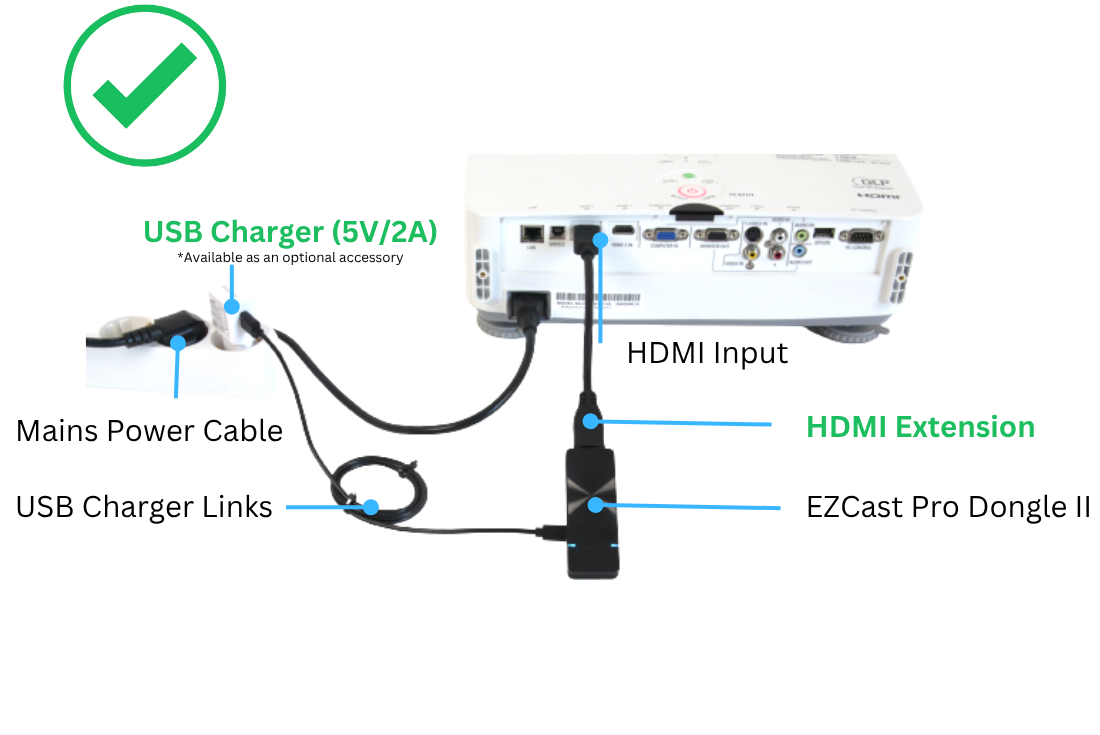
Please also see our power supply tips.
2. Check Setup¶
Is the included HDMI extension cable possibly missing in your setup? Or was the stick mistakenly mounted behind the screen?
Please check our recommended setups with a projector and with a large display:
Projector¶
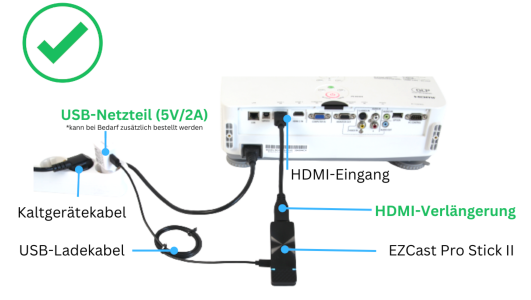
Large Display¶
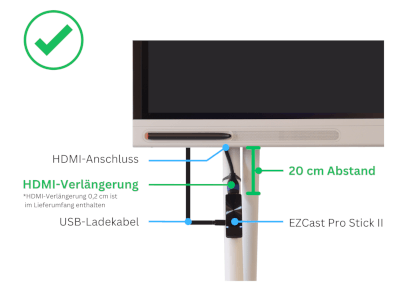
3. Check Firmware¶
Firmware Version¶
Is the latest firmware running on the device? You can either update the firmware over Wi-Fi or reinstall it via USB cable.
Recommended Settings¶
Please also check our recommended settings:
4. Check Wi-Fi¶
Please carefully read the requirements for connecting to a Wi-Fi network:
The following are the most common errors:
-
Since the EZCast device is a wireless streaming device, we do not recommend using DFS channels due to sudden Wi-Fi channel changes. For stable integration into your Wi-Fi infrastructure, please connect the EZCast device to a network using one of the following 5 GHz channels: 36, 40, 44, 48. Alternatively, you can activate legacy mode on the EZCast device to switch to the 2.4 GHz band.
-
Keep the distance between the EZCast Pro Dongle II, the access point, and the end devices within a maximum of 10 meters. Ensure an optimal signal strength between -40 dBm and -50 dBm.
5. Scan Wi-Fi Environment and Check RSSI¶
These are two important tests of signal strength, also known as RSSI (Received Signal Strength Indicator). This is an important metric when it comes to Wi-Fi performance.
You can find a detailed guide to scanning your Wi-Fi environment here.
6. Send Debug Log File¶
From the same dongle (see step 5), which you tested in the same Wi-Fi environment, please send us a debug log file of the dongle.
7. Check Your Wi-Fi Infrastructure Ports¶
Are you having connectivity issues with specific functions? Please check whether all required ports for EZCast Pro are allowed in your Wi-Fi infrastructure:
8. Perform Latency and Performance Test¶
Run a latency and performance test of your EZCast Pro device. When operated correctly, the latency time of a Full HD (1920 x 1080, 60Hz) video transmission should be about 0.2 seconds, and for UHD (3840 x 2060, 30Hz) about 0.7 seconds. Additionally, video playback should be possible for at least 6 hours.
You can find a detailed guide to performing the latency and performance test here.